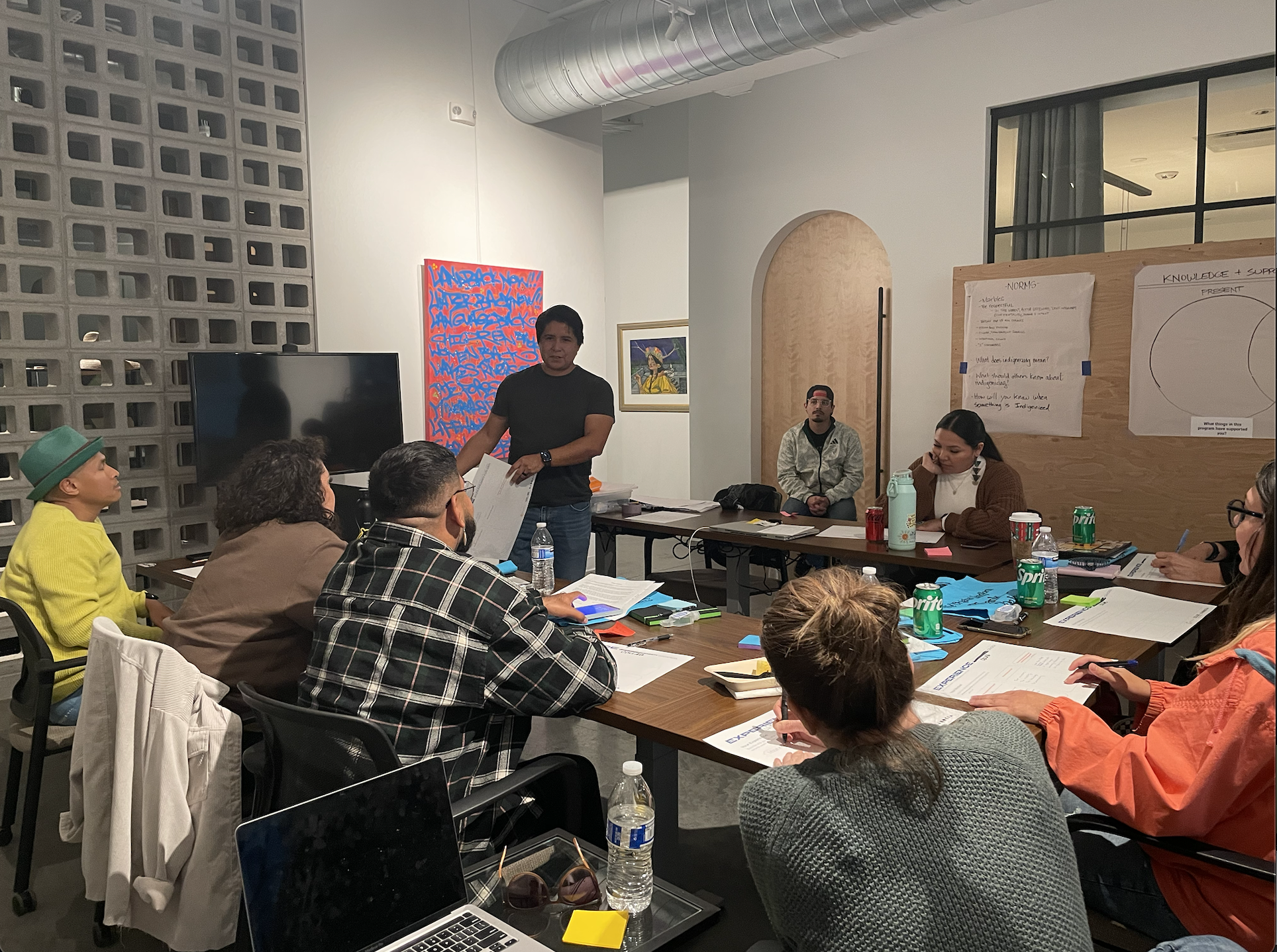In-the-field prototyping with Jugaad, MacGyver & me
The value of a prototype is in what it can test. It isn’t always necessary to make it pretty, nor to make it function, it totally depends on what you are trying to learn from it. On a frugal budget, be it of time or funds, one prototype can be made to test many things, and then adapted again to test even more…but really prototypes were made to be broken, and if they last too long it is a sign you’re either not testing them hard enough or you’ve become too attached. I admit…after sweating over prototypes late into the night in my makeshift workshops (set up in hallways, bedrooms, bathrooms etc) and scrutinizing them for days or weeks, it is hard to let them go, let alone batter them until they fail. But tough love is justified in this case
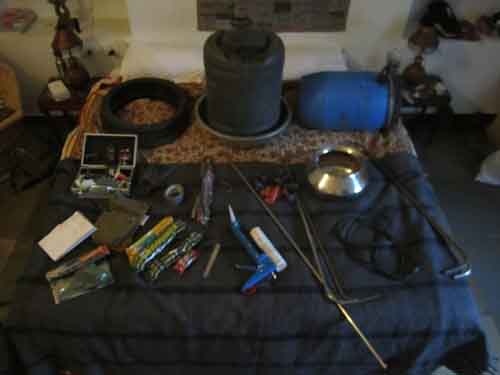
preparing for the next days prototyping
On this trip I was headed to Rajasthan with Wello to visit a mix of communities around Jodhpur & Udaipur to tune their device to better suit peoples needs and environment (see our Wello project page). I had to carry my kit on some challenging modes of transport to slice, melt, join, flatten, form, twist and repair our prototypes as we broke them.
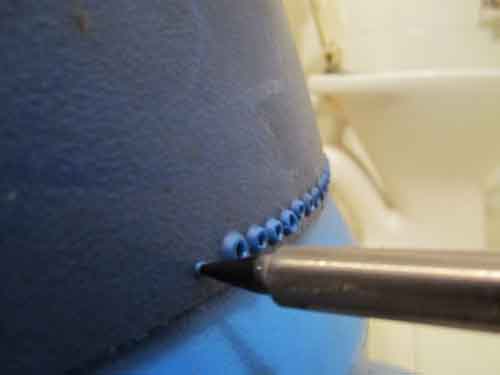
welding HDPE in the toilet
Prototyping in the field is a highly unpredictable task. Being as prepared as possible is key, but no matter how much you forecast you will never have everything you need. Rely on bringing quick and lateral thinking into play to compliment your toolbox and meet your desired ends. My kit has a lot of sticking, cutting, melting, sculpting, binding and gripping bits in it, but still I always find myself looking for little pieces in my environment to help hold our work together and get the job done. Every designer has their favorite set of tools, and their equally favorite solution for containing them. My essential tools include a Sharpie, an exacto, and ample 3M products. But my favorite tool: a $10 folding bamboo saw. This thing could cut through cement, slices bamboo like butter, and on this trip served as my polyethylene sculptor.
But, as i discovered, it is not the tools you’re packing before you fly that make or break your prototyping capacity in the field…
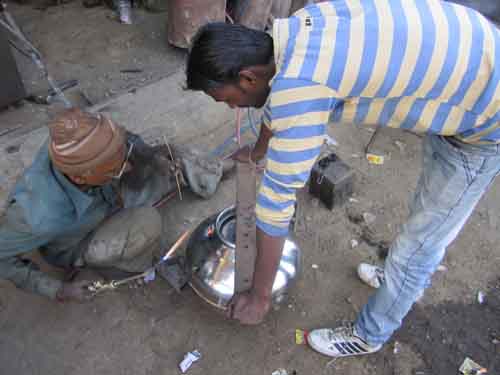
welding the impossible
In San Francisco as a member of TechShop I was blessed with a multitude of quality digital and manual tools to precisely achieve my desired results. However, on this job I was on the outskirts of Udaipur, Rajasthan, with no FabLab in sight, and a very fickle power supply. I had to rely on my little toolkit, and whatever else I could get done in the busy street market. This seemed like quite a challenge at the time, but in retrospect, I would rather have the bounty of these markets and the skilled craftsfolk and their nifty digits at my disposal than any amount of lasers and multi-axis marvels. I would even give up my precious toolkit for a knowledgeable moto-rickshaw driver to weave the backstreets to find the masters and magicians of working the material at hand. I was able to purchase roll, bend, weld, cut, (drink chai), sew, source, glue, plumb, weave, fold and repeat, all within an hour and one small block, and still get back to base for dinner. This would have taken me a week in my fancy SF streets and workshops, and it would have cost me a whole lot more time and cash to outsource as much as I did.
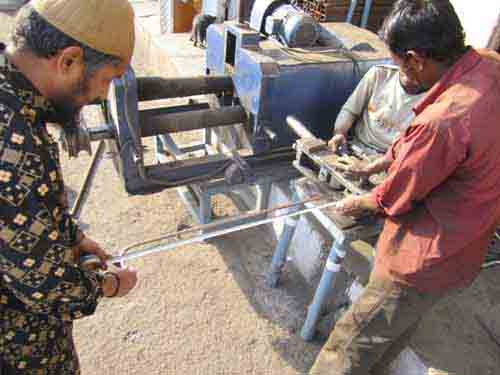
perfect bending by eye
I have never been so grubby in my life as I have when knee deep in protoypes in a hot dusty ad hoc workshop with crafty new friends. I was amazed at how little injury I witnessed in the chaotic workshops of the streets, among some very questionable methods and multitasking not a burn or any blood drawn. Luckily I was just covered in dirt and prototyping detritus, and also avoided any injury myself. I even found plastic shavings in my passport upon leaving India, and I’m glad that HDPE is inherently inert as I’m sure I accidentally ate some too.

local rubber master weaving his magic
Although significantly inspired by the prototyping capacity in the streets, we also made use of some high tech trickery on this trip. Down in Mumbai we found a 3D printing firm and promptly organized a scaled prototype to take into a local community to glean response. Once we were over the communities jokes of “It might need to be a little bit bigger…ha…haha….ha,” it was very useful tool for discussing specific features and design intentions, especially when we had a full size, somewhat cruder, version by our side to relate it too. The fact that it was high tech 3D printing straight from a virtual CAD file did not inspire as many wows as I had expected, but it was a little tricky to relay the wonders of the method without having a pocket 3D printer (Santa?…). I was impressed by the critical design language used and the confidence it was delivered with, the community really had a lot to say and had no qualms about ripping the designs to bits. Their feedback sent us straight back to the drawing board with fresh perspective and some dissolved assumptions.
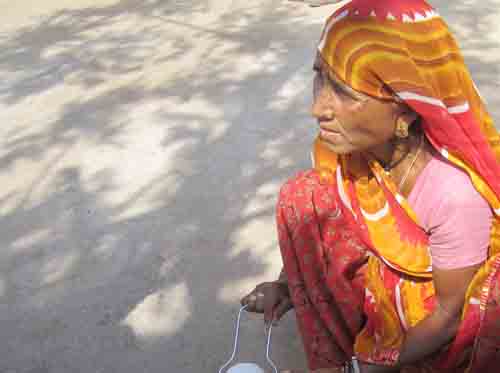
using scaled 3D printing in the community for feedback
Be it modeled on the streets or in some distant fancy lab, there is no better communication tool than a well crafted prototype…and there is literally nowhere where you can’t prototype. As long as you have your wits about you (which along with good doses of persistence & patience are the most important tools to pack) you can successfully prototype in the starkest of places.
Stay tuned for more prototyping stories in the field, next time from our World Bank Project in Yogyakarta Indonesia.
